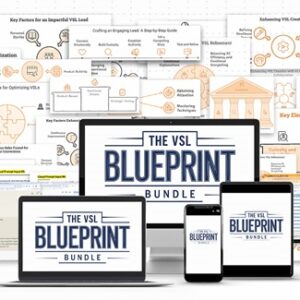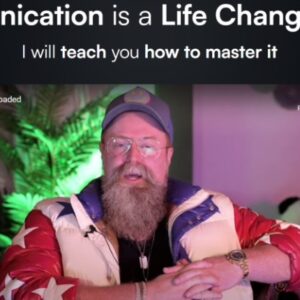
Ryan Stewart – Steal Our Local SEO Client Strategy
$997.00 Original price was: $997.00.$49.00Current price is: $49.00.
- Delivery: You Will Receive A Receipt With Download Link Through Email.
- If you need more proof ofcourse, feel free to chat with me!

Sales Page: https://www.linkedin.com/pulse/adjusting-your-seo-strategy-thrive-age-ai-ryan-stewart
Delivery Time: Instant DownloadDescription
Table of Contents
ToggleConquer the Local SEO Landscape with Ryan Stewart’s Innovative Strategies. Ryan Stewart, the renowned SEO expert, has been making waves in the industry with his groundbreaking strategies and insightful perspectives. In this comprehensive article, we delve into the insights and recommendations that have helped businesses of all sizes achieve remarkable success in the ever-evolving world of local SEO.
Steal Our Local SEO Client Strategy
As the digital landscape continues to evolve, with the rise of artificial intelligence (AI) and its impact on search engine optimization (SEO), Ryan Stewart and his team have been at the forefront of adapting and refining their approach to ensure their clients’ continued success.
One of the key insights from Stewart’s work is the recognition of the disruptive potential of AI in the realm of search. Both the sources cited in the briefing document acknowledge the possibility of AI cannibalizing organic traffic by providing direct answers within search results, reducing the need for users to click through to websites.

The Decline of Top-of-Funnel SEO Content
Traditional SEO strategies have often focused on creating top-of-funnel content, such as informational and high-level searches, to attract traffic. However, as the briefing document highlights, this approach is becoming less effective as AI-powered knowledge graphs and direct answers within search results make it less likely for users to click through to websites.
As one source states, “creating content around this type of search query is already been a waste of time.” The argument is that this type of content is increasingly being consumed through other channels, such as social media and referrals, and that users now prefer to get the direct answer they’re looking for without the need to navigate to a website.
Shifting Focus to Bottom-Funnel, Conversion-Oriented Content
In response to these changes, Ryan Stewart and the sources cited in the briefing document propose a significant shift in focus towards prioritizing bottom-funnel keywords and content. These are the keywords and content directly related to a product or service and indicating a high purchase intent, such as the “action” and “desire” stages of the customer journey.
As one source explains, “we’re flipping the funnel upside down because again like I said traditionally and I’ve taught before in the past five six years ago right when it was brutally competitive down here… we were looking at this and saying okay well like we can’t outrank a Yelp and a law info right so therefore we need to go up funnel and try and backdoor traffic by creating content up here well the problem with that is that drives No Business result.”
The key emphasis is on generating a clear return on investment (ROI) for businesses, which means that SEO efforts must directly generate leads and revenue. As the sources state, “the key is, nobody’s going to want to pay for this traffic especially if that traffic is purely informational and it’s constantly getting gobbled up by AI searches.”
Vertically Integrated Keyword Research
To align with this shift in focus, Ryan Stewart and his team have introduced the concept of “vertically integrated keyword research.” This approach goes beyond relying solely on organic rankings and involves analyzing the entire search engine results page (SERP) to understand the best ways to gain visibility for a specific keyword.
This involves identifying if the top placement is organic, paid ads, local service ads, or local packs, and then determining the best avenue to gain visibility for a client, which could be any channel, not just organic search.
As the first source explains, “We then take that list of keywords then we go back to the client and we help them understand basically the impact of what each of these places would be and the cost associated with that.”
Holistic Approach to Search Marketing
Both sources advocate for a holistic view of search marketing, where organic SEO, paid ads, and local listings are integrated to provide the best results. As the first source emphasizes, “what’s going to happen with search it’s becoming holistic right it’s not about organic versus paid versus local it’s about making your client more money.”
The emphasis is on getting the client visibility and traffic for bottom-funnel keywords, and then focusing on that in other channels as well as organic SEO.
Ryan stewart seo.
Ryan Stewart and his team have embraced this holistic approach, recognizing that the traditional siloed approach to search marketing is no longer effective. By integrating organic SEO, paid ads, and local listings, they can help their clients achieve maximum visibility and, more importantly, drive tangible results in the form of leads and revenue.
Adapting to the AI Disruption
One of the key challenges highlighted in the briefing document is the potential for AI to disrupt and cannibalize organic traffic. Ryan Stewart and his team have been proactive in addressing this issue, recognizing that the rise of AI-powered search results presents both challenges and opportunities.
As the second source cited in the document states, “With every great change comes greater opportunity.” Ryan Stewart and his team have been working to refine and improve their SEO practices to ensure their clients’ continued success in the face of these changes.
Prioritizing Conversion-Driven Content
A core aspect of Ryan Stewart’s strategy is the emphasis on creating content that directly addresses the needs of customers who are ready to make a purchase or are actively evaluating their options. This shift away from top-of-funnel, informational content is a direct response to the changing landscape, where AI is increasingly providing direct answers to user queries.
By focusing on bottom-funnel keywords with high commercial intent, such as “DUI attorney near me,” Ryan Stewart and his team are able to create targeted content, such as service pages, location pages, and Google Business Profile pages, that directly address the needs of these users.
Vertically Integrated Keyword Research in Action
The concept of vertically integrated keyword research, as introduced by Ryan Stewart, is a crucial component of his team’s approach to local SEO. By analyzing the entire SERP for each target keyword, they can determine the optimal way to achieve visibility, whether that’s through paid ads, Local Service Ads, local packs, or organic search.
This holistic approach allows Ryan Stewart’s clients to gain the most effective visibility for their business, rather than solely focusing on organic rankings. As the first source states, “We then take that list of keywords then we go back to the client and we help them understand basically the impact of what each of these places would be and the cost associated with that.”
Integrating Paid and Organic Strategies
Another key aspect of Ryan Stewart’s local SEO strategy is the seamless integration of paid and organic search strategies. Rather than treating these as separate channels, Ryan Stewart and his team recognize the importance of leveraging both to provide the best overall results for their clients.
By understanding the full SERP landscape and the optimal way to gain visibility, Ryan Stewart’s team can recommend a combination of paid ads, local listings, and organic SEO tactics to ensure their clients’ businesses are prominently featured in front of their target customers.
This holistic approach allows Ryan Stewart’s clients to maximize their reach and get the most value out of their search marketing efforts, regardless of the specific channel or tactic employed.
Frequently Asked Questions about SEO in the Age of AI
- How is AI expected to impact SEO and website traffic? AI is predicted to significantly alter how people search, potentially cannibalizing organic traffic by providing direct answers within search results rather than directing users to websites. This poses a risk to businesses that rely on traffic from top-funnel, informational content, because search engines may simply extract and display the information directly, leading to “no-click” searches and less website visitation.
- What is the AIDA marketing funnel and how does it relate to SEO? The AIDA funnel represents the customer journey: Attention, Interest, Desire, and Action. Traditionally, SEOs create content targeting each stage to capture users at various points in their journey. Attention-stage content is broad and informational, while Action-stage content targets those ready to convert. The traditional approach assumes that generating traffic through top funnel content drives interest in business solutions.
- Why is the traditional SEO approach of focusing on top-funnel content less effective now? Google’s search results, including knowledge graphs and panels, directly answer many top-funnel informational queries, reducing the need for users to visit websites. Furthermore, social media is increasingly taking over the discovery phase for many users. This means that investing heavily in top-funnel SEO content may no longer drive business results, as it is unlikely to convert visitors into paying customers.
- What is the new strategy for SEO in light of AI changes, and how does it differ from the traditional approach? The new strategy involves “flipping the funnel” by prioritizing bottom-funnel content, specifically targeting users with high commercial intent. This means focusing on keywords that indicate a desire to purchase a specific product or service, or are in the action phase (e.g. “DUI attorney near me”). The new approach de-prioritizes top-funnel, informational content.
- What does “vertically integrated keyword research” mean and how does it work? Vertically integrated keyword research involves analyzing the search results page (SERP) for each high-value, bottom-funnel keyword. Instead of only focusing on organic rankings, you examine the different formats Google uses and the best way to get visibility, be it through local service ads, pay-per-click ads, Google Business Profile listings, or traditional website listings. The goal is to use the format that will yield the most effective results.
- Why is the focus shifting from purely organic SEO to a broader “search marketing” strategy? The shift acknowledges that in the current landscape, it is less about achieving a top organic ranking and more about obtaining visibility in a way that generates revenue. This may include leveraging paid options such as ads to capture high-intent traffic, and ensuring that the strategy is directly impacting the bottom line of the business. This means being visible in search at the most effective position, regardless of whether that’s organic or paid.
- How can SEOs ensure their survival and success in the face of AI-driven changes? SEOs must shift their focus to being profit-focused, not just traffic-focused. By prioritizing business results and focusing on bottom-funnel content that drives conversions, SEOs can demonstrate real value to their clients. Also, they should adopt the mentality that SEO is now more “holistic” and that “paid,” “organic,” and “local” should all work together to help clients make money.
- What simple changes can businesses make to their SEO strategies to adapt to the AI landscape? Businesses should:
- Prioritize bottom-funnel keywords: Focus on keywords that show a high intent to purchase.
- Vertically integrate keyword research: Analyze search results to identify the best visibility strategy, which may include paid and local options alongside organic content.
- Consolidate content: Redirect and repurpose top-funnel content to support bottom-funnel pages.
- Adopt a holistic search marketing strategy: Consider paid options to generate business impact instead of relying on organic reach, or in addition to organic reach.
Conclusion
In the ever-evolving world of digital marketing, Ryan Stewart and his team have positioned themselves as leaders in the field of local SEO. By recognizing the disruptive impact of AI on traditional SEO strategies, they have been able to adapt and refine their approach to ensure their clients’ continued success.
Through a focus on conversion-driven content, vertically integrated keyword research, and a holistic integration of paid and organic search strategies, Ryan Stewart and his team have demonstrated the ability to navigate the changing landscape and help businesses of all sizes thrive in the local SEO landscape.
As the briefing document suggests, “With every great change comes greater opportunity.” Ryan Stewart has embraced this philosophy, transforming challenges into opportunities and delivering innovative solutions that drive tangible results for his clients.
By implementing Ryan Stewart’s strategies and insights, businesses can position themselves for long-term success in the highly competitive world of local SEO, capitalizing on the evolving digital landscape and the rise of AI-powered search.
Related products
-
Sale!

[GroupBuy] Coach Kyle – Confidence and Self Mastery [November 2024]
$125.00Original price was: $125.00.$72.00Current price is: $72.00. -
Sale!

[GroupBuy] Stefan Georgi – VSL Blueprint Bundle
$297.00Original price was: $297.00.$72.00Current price is: $72.00. -
Sale!

John Assaraf Top Programs – Winning The Game Of Money 2024
$1,497.00Original price was: $1,497.00.$39.00Current price is: $39.00. -
Sale!

The Blueprint Reloaded by Owen Cook
$298.00Original price was: $298.00.$24.00Current price is: $24.00.
Reviews
There are no reviews yet.